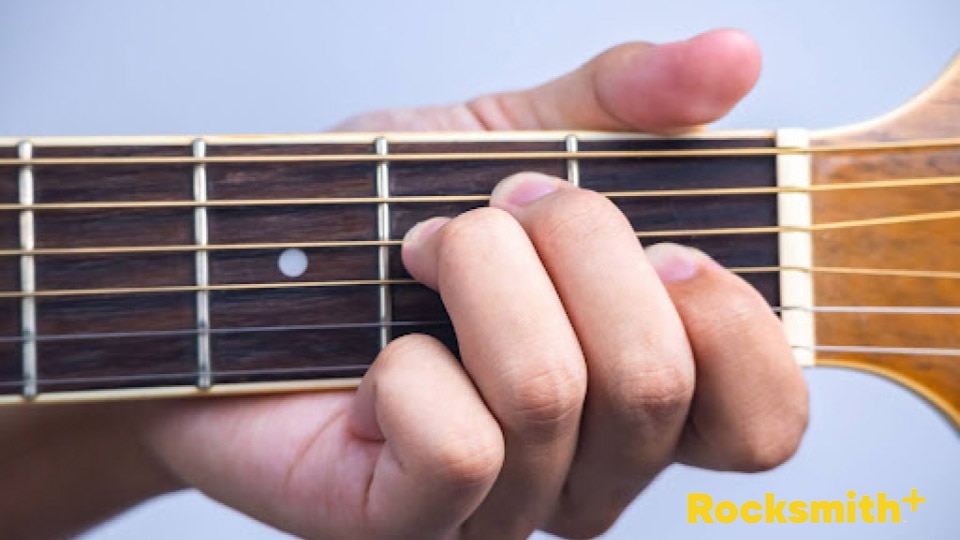The A minor (Am) chord is a cornerstone in the world of music, coloring countless songs with its rich, melancholic tone. When you hear this minor chord in a song, it's often evoking a certain deep emotion or feeling.
But as with many elements of guitar playing, there's not just one way to produce this chord. The guitar, in its versatile nature, offers musicians the liberty to practice chords, including Am, in a variety of positions and voicings.
This article delves into four distinctive ways to play the Am chord, each offering a unique sound and feel, expanding your musical palette as a guitarist.
What is the Role of the Am Chord?
In popular music, the Am chord is common, being a favorite for songwriters across genres, from rock ballads to classical compositions. This is because of the depth and emotion the chord can bring to a musical piece, often adding layers of meaning to lyrics or enhancing the overall mood of a song.
As we journey through the various methods of playing this chord, remember that each approach, while rooted in these three notes, brings its distinct sonic fingerprint to your playing.
1. Open Am Position
![[RS+] How To Play Am on Guitar 4 Different Ways SEO ARTICLE - open am position](http://staticctf.ubisoft.com/J3yJr34U2pZ2Ieem48Dwy9uqj5PNUQTn/5WWbj2kfa8Yn19MAunMkmU/7af2e2b8145913ebd5bf7313f08acd25/chart.png)
Open chords, often referred to as cowboy chords, are a foundation for many guitarists. Played primarily in the first few frets of the guitar, these chords utilize open strings in combination with fretted notes, resulting in a resonant and full sound.
The open position of Am is one of the first chords many budding guitarists learn, given its frequent occurrence in songs and relative ease of fingering.
- Place your 1st finger (index) on the 1st fret of the B (2nd) string.
- Your 2nd finger (middle) finds its home on the 2nd fret of the D (4th) string.
- Put your 3rd finger (ring) on the 2nd fret of the G (3rd) string.
- Strum starting from the A (5th) string down, ensuring the A and high E (1st) strings resonate openly.
To avoid any unwanted bass sounds, either skip the low E (6th) string or use your thumb to gently touch it, muting the sound.
The open Am chord has an inherent warmth and depth to its sound. Its accessibility and tonal richness make it a favored choice for acoustic renditions, ballads, and genres where the guitar's natural timbre shines. However, mastering this chord requires ensuring that each string rings clearly, without any muffled notes.
2. Barre Chord on the 5th Fret
Barre chords open up a whole new world for guitarists. Unlike open chords, which are limited to certain positions, barre chords are movable. This means that once you've mastered a barre chord shape, you can shift it up and down the fretboard to play different chords. The Am chord can be beautifully expressed as a barre chord on the 5th fret.
- Use your 1st finger to press down firmly across all strings at the 5th fret. This forms the "barre."
- Your 3rd finger should be positioned on the 7th fret of the A (5th) string.
- Similarly, place your 4th finger (pinky) on the 7th fret of the D (4th) string. Your 2nd finger remains free.
Achieving a clear sound with barre chords requires strength and precision, as one must ensure even pressure across all strings. With practice, the 5th fret Am barre chord can become a dynamic tool in your repertoire, especially when playing with a band or looking for a more mid-range tonal variation of the chord.
3. Using a Capo on the 5th Fret
The capo is a guitarist's best friend when it comes to transposing music on the fly. By clamping down on the guitar's neck, it effectively moves the nut, raising the pitch of open strings, which in turn allows you to play chord shapes in new tonal territories.
Using a capo isn't just about changing keys; it's also a means to find a different voicing or tonal color for familiar chords, including our beloved Am.
- Place the capo on the 5th fret. This will raise the pitch of the guitar by five half-steps.
- Now, position your fingers as if you were playing the open Em position, with your first finger pressing the 5th string on the second fret, and your second finger pressing the 4th string on the second fret.
- Strum the chord. With the capo at the 5th fret, this shape produces the sound of an Am chord.
By using the capo, guitarists can match the key of a song to their vocal range or adapt to other instruments in a band setting. Additionally, the capo-ed Am can bring a unique timbre to songs, making them sound revitalized and providing variety in performances.
4. Am7 for a Jazzy Feel
![[RS+] How To Play Am on Guitar 4 Different Ways SEO ARTICLE - am for jazzy feeling](http://staticctf.ubisoft.com/J3yJr34U2pZ2Ieem48Dwy9uqj5PNUQTn/2teFNhHYCDZ7QvYO85DrZy/a359fca88340d0a560af8b0613cf37d9/am2.jpg)
If you want to add a hint of jazz or a touch of sophistication to your chord progressions, then venturing into the world of seventh chords is a fantastic idea. The Am7 chord is essentially the Am chord with an added G note, creating a jazzy, bluesy feel.
To play the Am7 chord:
- Start with the open Am position.
- Add your 4th finger (pinky) to the 3rd fret of the high E (1st) string. This introduces the G note into the mix.
- Strum all the strings, avoiding the low E (6th) or muting it as previously discussed.
Including the seventh interval softens the chord, making it feel more laid back. Am7 can be a beautiful substitution for the regular Am in progressions, especially in genres like soul, jazz, R&B, or even pop. Incorporating this chord into your playing offers a gentle touch of complexity, making listeners perk up their ears to the nuanced sounds you're producing.
Mastering A Minor
![[RS+] How To Play Am on Guitar 4 Different Ways SEO ARTICLE - song](http://staticctf.ubisoft.com/J3yJr34U2pZ2Ieem48Dwy9uqj5PNUQTn/1LOULzmEk4K90oqICQIIIh/620a46bc609a618b6c1e9e8ed308555d/song.png)
For those eager to further their guitar journey, modern tools and platforms like Rocksmith+ offer invaluable resources. Rocksmith+ is more than just a tool; it's a comprehensive learning platform, intertwining fun with genuine skill development.
Its vast library of songs, spanning various genres, allows players to practice chords, including the Am, in real-world contexts. Combined with interactive feedback and tailored lessons, it bridges the gap between traditional learning and digital instruction.
Remember, diversifying your approach to the Am chord not only enhances your adaptability as a musician but also deepens your connection with the music you create. Commit to a guitar practice plan and see where the journey takes you.
Sources:
Why are minor chords sad and major chords happy? | BBC Science Focus
Hitting the Books: How music chords hack your brain to elicit emotion | Engadget









